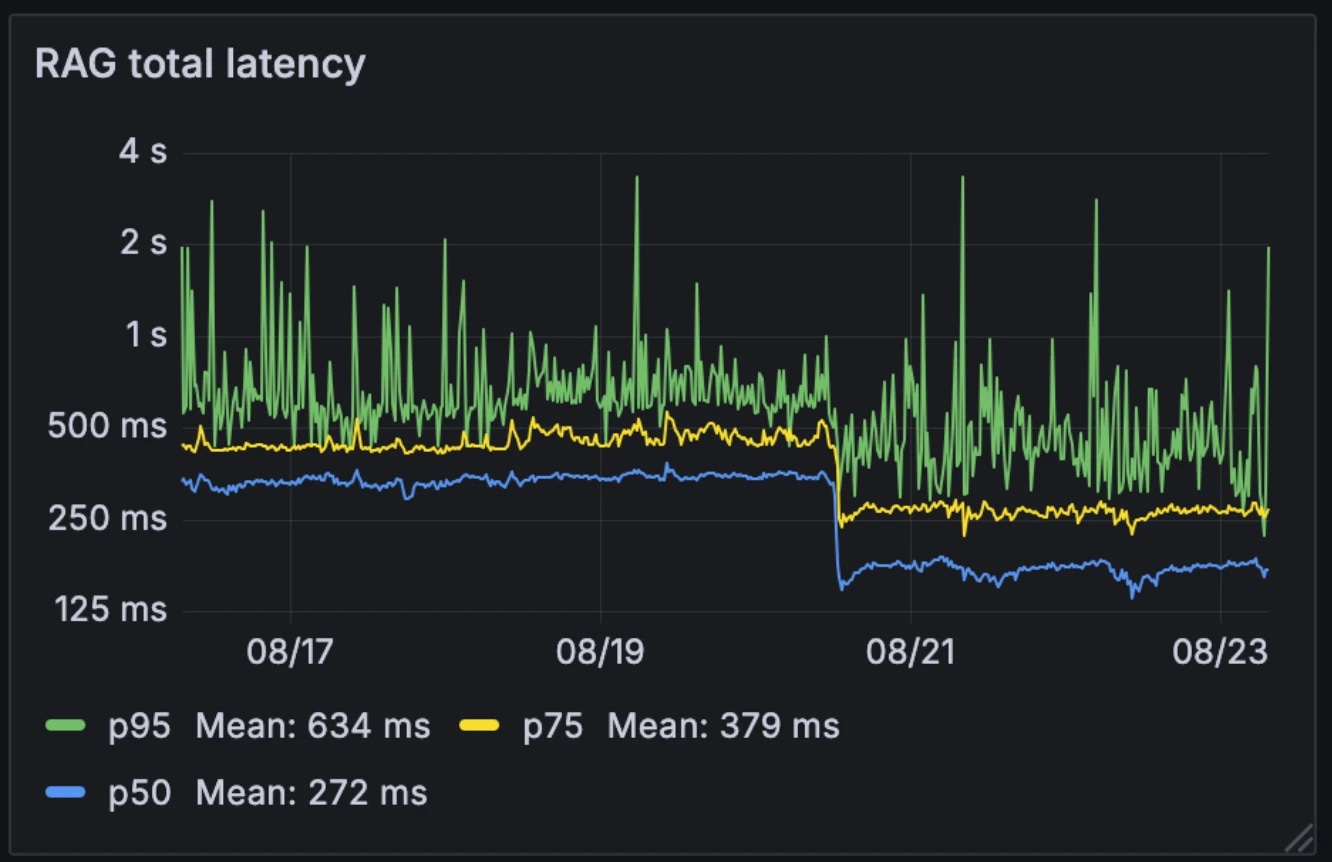
Eleven Music: new tools for exploring, editing and producing music with AI
Introducing a set of updates that expand what creators and developers can build with Eleven Music.
Tips from latency-sensitive RAG systems in production
RAG improves accuracy for AI agents by grounding LLM responses in large knowledge bases. Rather than sending the entire knowledge base to the LLM, RAG embeds the query, retrieves the most relevant information, and passes it as context to the model. In our system, we add a query rewriting step first, collapsing dialogue history into a precise, self-contained query before retrieval.
For very small knowledge bases, it can be simpler to pass everything into the prompt directly. But once the knowledge base grows larger, RAG becomes essential for keeping responses accurate without overwhelming the model.
Many systems treat RAG as an external tool, however we’ve built it directly into the request pipeline so it runs on every query. This ensures consistent accuracy but also creates a latency risk.
Most user requests reference prior turns, so the system needs to collapse dialogue history into a precise, self-contained query.
For example:
The rewriting turns vague references like “those limits” into self-contained queries that retrieval systems can use, improving the context and accuracy of the final response. But relying on a single externally-hosted LLM created a hard dependency on its speed and uptime. This step alone accounted for more than 80% of RAG latency.
We redesigned query rewriting to run as a race:
.webp&w=3840&q=95)
This new architecture cut median RAG latency in half, from 326ms to 155ms. Unlike many systems that trigger RAG selectively as an external tool, we run it on every query. With median latency down to 155ms, the overhead of doing this is negligible.
Latency before and after:

The architecture also made the system more resilient to model variability. While externally-hosted models can slow during peak demand hours, our internal models stay relatively consistent. Racing the models smooths this variability out, turning unpredictable individual model performance into more stable system behavior.
For example, when one of our LLM providers experienced an outage last month, conversations continued seamlessly on our self-hosted models. Since we already operate this infrastructure for other services, the additional compute cost is negligible.
Sub-200ms RAG query rewriting removes a major bottleneck for conversational agents. The result is a system that remains both context-aware and real-time, even when operating over large enterprise knowledge bases. With retrieval overhead reduced to near-negligible levels, conversational agents can scale without compromising performance.

Introducing a set of updates that expand what creators and developers can build with Eleven Music.

Increasing physician reach by 30% and cutting admin time by 10 hrs/week
Powered by ElevenLabs Agents